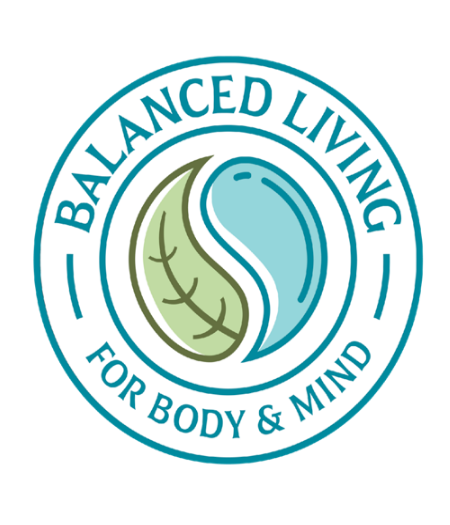Written by Toni Baker, Balanced Living Naturopath
Perimenopause – what is it? The transition period that links a women’s reproductive years to menopause. A time of 3-10 years before a woman has no monthly cycle for one year and is then officially classified as being in ‘menopause’!
Emotionally, this is a vulnerably significant time. As well as experiencing many physical symptoms, many women experience a time of grief and a powerful death/rebirth process.
Society has wrongly misinterpreted this period as an ending. Although menopause does signify an end to what we know, we should also acknowledge a time of expansive freedom and new beginnings.
Biologically, women will start to see reduced ovarian production of estrogen, progesterone, testosterone and increasing levels of Follicle-Stimulating Hormone (FSH) and Luteinizing Hormone (LH) with decreased number of oocytes.
Secondary biological changes include decreased melatonin production causing sleep problems and increased inflammation and tumour necrosis factor.
However, before we go any further, as any good practitioner will tell you, it’s not just about hormones.
We first need to look at the following areas:
- HPA Dysfunction (Stress)
- Inflammation (Mast Cell Activation)
- Endocrine Glands ie; Thyroid or Pancreas
- The Microbiome
- Excess Fat Mass
- Endocrine Disrupting Chemicals (EDC’s)
- Diet and Lifestyle
By looking into all of these areas and getting them balanced will greatly help with any symptoms experienced during this time.
There can be a myriad of symptoms ranging from moodiness and irritability, sleep issues, bloating, breast tenderness, weight gain, chronic headaches, frequent urination, cycle changes and night sweats. Stay with me at this point, I know it doesn’t sound like much fun but believe me, there is a lot we can do to help!
Note: I’m only going to focus on a couple of important areas for the purpose of this article.
Hot Flushes
The legendary hot sweats aren’t just reserved for menopause, night sweats can begin as early as your late 30’s for some women but they will come and go. Studies have shown up to 85% of women will experience ‘hot flushes’ or ‘night sweats’ with a third of those classified as serious. These can last on average for around 7 years and around 4.5 years after menstrual cessation.
What’s really interesting is the pathophysiology for these is still largely unknown and so we only have theories to work with.
One of the theories are that there is a resetting and narrowing of the thermoregulatory system in the hypothalamus and is associated with fluctuating estrogen levels.
Another is the variability of estradiol levels, which are not levelling themselves to correlate with the body.
Whatever is causing them, they are unpleasant and sometimes an embarrassing side effect to hormonal changes. However, it’s often said that this can be a bonding exercise with other women going through the same journey (always look at the positive!).
The Role of Estrogen In Perimenopause
Another hormonal change important to cover in this article is the role of estrogen in perimenopause and unlike the drop in hormone in menopause, estrogen will fluctuate like a rollercoaster during these years’ causing what is known as estrogen dominance.
Symptoms here will include sore breasts, irregular cycles, low libido, fatigue and weight gain around the middle.
It’s important here to detoxify the estrogen as the pathways can greatly influence their action. Estrogens that are not properly metabolised and cleared by the liver remain in the body and become highly toxic.
These high levels of estrogen play a role in PMS, endometriosis, PCOS, uterine fibroids and breast cancer.
The Good News & Supplements to Support
The good news is estrogen levels in our bodies can be reduced with a good look at all of the areas mentioned and some key products within our dispensary.
One notable phytonutrient is Brassica Oleracea (Broccoli Sprout), which modifies phase 1 CYP450 enzymes in the liver to 2α-hydroxyestrone production and reduces the bad 16α-hydroxyestrone. It also increases phase 2 conjugation of estrogen through glutathionation, methylation and sulfation.
DIM can also be a useful supplement as it is naturally sourced from broccoli sprouts and at low doses can help alter oestrogen pathways.
Whilst many of these products sit within our practitioner range as they need some monitoring, a really good alternative here is Premier Research Labs Estro Flavone with DIM.
On the nutritional side, Magnesium is a key nutrient from PMS to hot flushes. It’s also crucial for bone formation, mood control, pain and inflammation. Look at a Pure Encapsulations’ Magnesium Glycinate for better absorption.
Magnesium combined with B6 is great combination throughout our cycles and good levels have been connected with later onset menopause. A good B complex is always a winner here to add in some B9, B12 and other nutrients. Try Premier Research Labs Premier B.
Omega 3 oils are another great support with any symptoms from inflammation and have also proved a good support on depression screening and bone density. Try Premier Research Labs EPA/DHA Marine for a good quality product.
Don’t forget your Vitamin D to improve everything from mood, cognitive function, hot flushes and bone density. Try to Premier Research Labs D3 Serum (Drops) for an easy way to get your daily dose.
On the herbal side the Chaste tree has been well researched on improving progesterone levels. Chaste tree has a lovely affinity to women and their hormones and it is said to take a dose in the morning as that’s when your pituitary is most responsive and is the gateway to the feminine dimension. Quantum Female Support has a nice blend of Chaste tree, milk thistle and organic turmeric.
Just a word on hormone replacement, our first line would always be to find out what is causing the imbalance and investigate underlying mechanisms such as adrenal stress or blood sugar issues. However, if we are unable to resolve any imbalances, then bio-identical hormones would be a good choice especially as they show up on lab tests and can be monitored well.
Testing For Hormone Imbalances
On the testing front, our gold standard testing at the moment is the Dutch Test – Dried Urine Test from Comprehensive Hormones. The Dutch offers the most extensive profile of sex and adrenal hormones along with their metabolites. This test is available in the Balanced Living clinic, it’s simple to do and the information gained is truly valuable to women (and men) of any age.
Other testing to look at would be a GI Map Stool Test, bloods for thyroid, glucose, insulin, Vitamin D, Active B12/Folate and iron levels.
Food Support
On a food support side, swap out your carbs for healthy fats which are essential for hormone production. Look for avocados, salmon, coconut oil, grass fed butter and plenty of bone broth.
Emotional Support
Address any emotional issues and use plenty of adaptogens for support. Look at Premier Research Labs Adaptogen R3 with Withania and Rhodiola.
This is time to really focus on yourself. Look at meditation, massage, acupuncture, yoga plus some alone time. Any cardio exercise can be great way to remove excess hormones.
Finally, what about some positives! Delight in the fact that you will very soon say goodbye to periods and PMS. No more worries about pregnancy and hormonal headaches.
Instead, you should be at a time in your life where your feel empowered and able to take stock of all that no longer serves you.
So although many women may feel grief about the letting go process, this is also the gateway to wisdom, power and freedom.
If you are needing some support to tend to this transition in your life, we do now offer both virtual and in-clinic appointments. You can drop us a message at clinic@balancedlivingasia.com.

